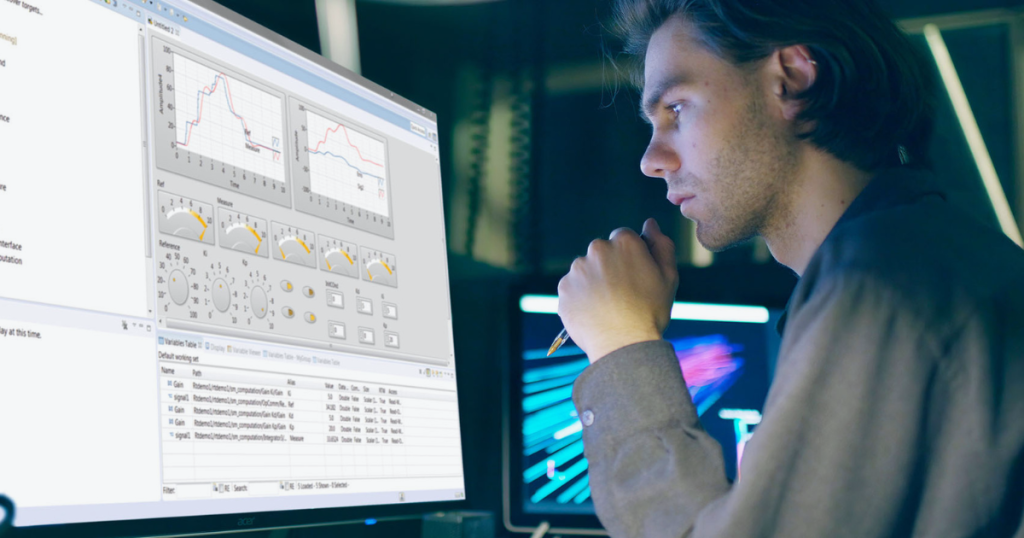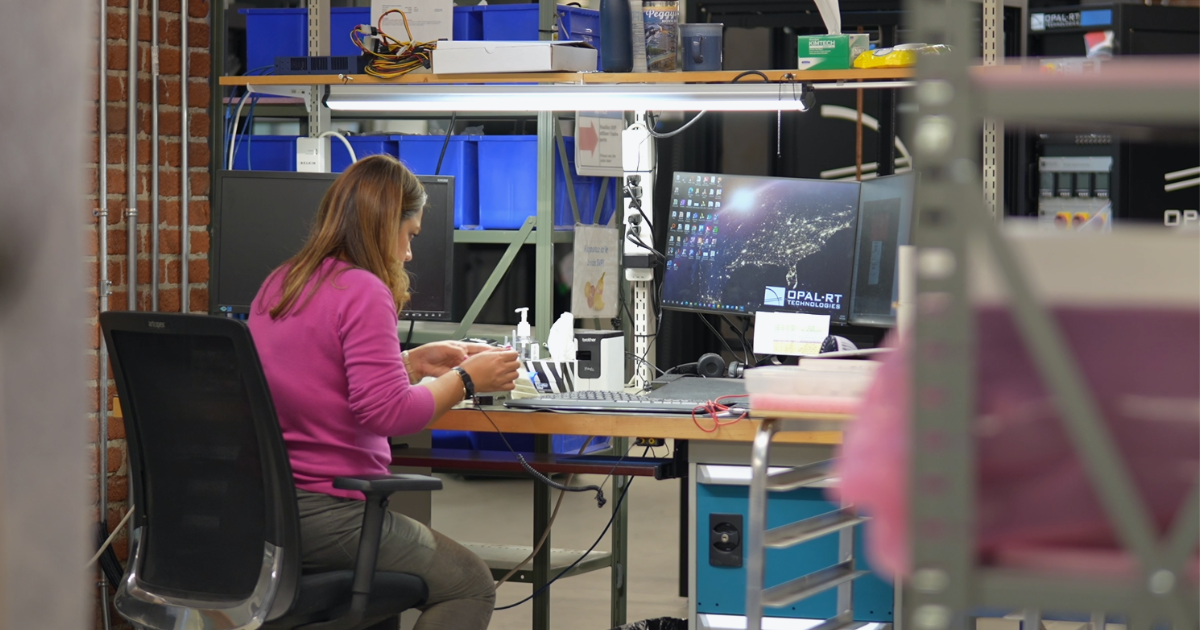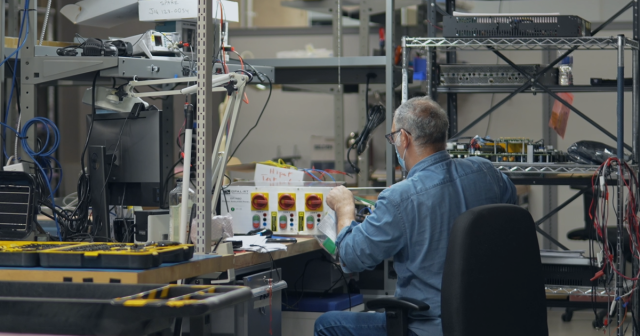
Testing a high-power energy system without real hardware in the loop leaves critical blind spots. Relying solely on controller simulations is a recipe for overlooked interactions and potential failures. Power hardware-in-the-loop (PHIL) testing closes this gap by integrating actual electrical equipment into real-time simulations, merging the virtual and physical components into one test environment. The result is safer, more comprehensive validation that also saves time and money by catching issues early. In fact, incorporating real power devices into simulation has demonstrated improved testing at lower cost and shorter development cycles compared to traditional full-scale methods. PHIL is not a luxury add-on but a necessity for true confidence in modern energy and power systems. Only by seeing how real hardware behaves under any condition – from normal operation to extreme faults – can engineers eliminate uncertainty and ensure a design will perform reliably before it ever goes live.
Controller-only testing leaves critical gaps

Hardware-in-the-loop (HIL) setups often begin with only control hardware connected to a simulated plant. While this controller-only approach is useful, it ignores the very equipment the controller manages. Several critical gaps emerge when physical power hardware is left out of the testing loop:
- Missing physical dynamics: Simulated models can’t fully capture a real device’s behaviour. Effects like magnetic saturation, internal losses, or high-frequency transients might be oversimplified, creating blind spots in a pure software test.
- Unvalidated hardware performance: An actual inverter or motor may respond differently to control commands than its idealized model predicts. Without testing the real device, those differences stay hidden until late prototyping or field trials – when fixes are far more expensive.
- Unsafe full-scale testing: If the first time power hardware sees full load is during field integration, any undetected issue could trigger dangerous failures or equipment damage. Conducting such high-power tests without an intermediate step raises serious safety risks.
- Delayed issue discovery: Hardware-software integration problems that only appear at final deployment can force last-minute design changes and costly project delays.
Excluding physical devices from HIL testing essentially leaves engineers guessing how the system will behave once actual equipment is involved.
These gaps in insight and validation drive the need for a better approach – one that brings hardware into the simulation environment to resolve uncertainties.
PHIL bridges simulation and hardware for safe testing
Power hardware-in-the-loop provides that missing link by seamlessly merging real equipment with virtual models in a closed-loop simulation. In a PHIL setup, a real-time digital simulator models part of the system (for example, an electric grid or a motor load) while a physical hardware component (such as a power converter or motor) stands in for its simulated counterpart. Specialized power amplifiers interface the simulator to the hardware, exchanging voltages and currents so that the virtual and physical parts operate together as one system.
Crucially, PHIL enables this integration without the dangers of full-scale field testing. The rest of the system exists in software, so engineers can subject the real hardware to a wide range of conditions – normal and abnormal – within a controlled lab setting. For example, researchers at NREL use a megawatt-scale PHIL platform to test energy devices at full power under simulated grid conditions, safely evaluating their performance and reliability. Because the “grid” in this case is virtual, no customers are at risk, yet the hardware experiences authentic voltages and currents. As NREL explains, PHIL ensures new hardware works at actual load levels before integration, mirroring real operating conditions with zero risk to utility systems or personnel.
By bridging real and simulated domains, PHIL gives engineers a realistic proving ground for hardware. They can see how a device truly behaves – its stability, efficiency, and control response – as if it were in service, but without the costs or hazards of testing on a live power system. Unstable interactions or design flaws become evident and can be corrected early. Meanwhile, all tests remain under strict laboratory oversight, so there’s no chance of a trial inadvertently causing an outage or damaging equipment. Engineers get the best of both worlds: genuine hardware insight with a safety net under every experiment.
High-fidelity simulation of extreme scenarios without risk

PHIL’s ability to explore extreme “what if” scenarios is especially valuable. Engineers can simulate rare but severe events – sudden short-circuits, surge currents, loss of grid connection, and other anomalies – in software while the physical device under test experiences the resulting conditions in a safe environment. For instance, it becomes feasible to push a real inverter to its maximum load or impose a severe voltage sag and observe how the hardware and controller react, all without risking damage. If a fault would normally destroy equipment or endanger personnel, in PHIL that fault exists only in the virtual model. The hardware “sees” the disturbance and responds, but the protective layer of simulation ensures no harm if something goes wrong. Engineers have successfully used PHIL setups to replicate overloads and fault conditions, providing a safe arena for testing such extremes without endangering prototypes or violating safety limits.
This kind of high-stress trial reveals how equipment behaves under worst-case conditions, building confidence that the system can handle real incidents.
PHIL acts as a high-fidelity flight simulator for power systems – it lets you ‘crash-test’ devices virtually to ensure the real ones won’t fail unexpectedly when deployed.
PHIL shortens development cycles and builds confidence
Beyond technical insights, integrating power hardware-in-the-loop yields major improvements in project timelines and stakeholder confidence. By incorporating hardware testing earlier and more often, PHIL accelerates development while assuring everyone that the system will work as intended.
Accelerating development with continuous validation
When PHIL is part of the development process, teams don’t have to wait for a full system prototype to start validation. You can begin testing real hardware as soon as it’s available by plugging it into a real-time simulation of the rest of the system. Design flaws or incompatibilities surface much sooner under this approach, long before final deployment. Addressing issues in parallel with design is far more efficient than troubleshooting at the end. An MIT microgrid project found that using HIL reduced development costs, cut down deployment time, and minimized the risk of equipment damage by allowing earlier testing of components.
PHIL also turns testing into an ongoing iterative practice rather than a one-off checkpoint. Instead of building a single expensive demonstrator for a late-stage integration test, engineers continuously swap real hardware in and out of the simulation throughout development. This significantly reduces the chance of last-minute surprises. One industry review noted that comprehensive HIL testing prevents costly failures and allows far more test cases than physical prototypes ever could. In practical terms, PHIL lets you run dozens of scenarios on the bench each day, refining both hardware and software in tandem. By the time a final design is ready, every critical component has been exercised under a broad range of conditions. The result is a thoroughly vetted system with little left to chance.
Ensuring reliability and confidence before deployment
Ultimately, PHIL gives project stakeholders peace of mind. When an energy system has been proven with real hardware in the loop against everything from normal loads to extreme faults, there is far less uncertainty at launch. Utilities and manufacturers can trust that a new device or control scheme will behave as expected in the field because they’ve essentially seen it operate under all conditions in the lab. This translates to smoother commissioning and fewer surprises during deployment. In an industry where safety and reliability are paramount, PHIL provides the assurance that no interaction has been overlooked. Organisations that embrace power hardware-in-the-loop can de-risk their projects. They shorten development cycles, avoid expensive rework, and deliver a robust, validated product to market with confidence.
OPAL-RT empowers comprehensive PHIL testing
Continuing the focus on building confidence, OPAL-RT empowers engineers to bring power hardware into the simulation loop safely and effectively. The company’s real-time digital simulators and open software platform provide the fidelity and performance needed for rigorous PHIL testing. Teams can integrate actual power devices (ranging from electric vehicle components to grid-scale converters) directly into virtual models running in real time. This capability makes early hardware validation and iterative testing a natural part of development rather than a last-minute add-on.
This technology is designed with the challenges of power hardware-in-the-loop in mind. Its scalable simulators offer ultra-low latency and precise computation, ensuring stable interaction between simulated grids and physical equipment at any power scale. The platform’s flexibility allows engineers to emulate everything from microgrids to large transmission systems while interfacing with real hardware under test. By using OPAL-RT tools, engineering teams can confidently simulate extreme scenarios, fine-tune control strategies, and observe true hardware responses – all before deployment. OPAL-RT provides a safe, realistic, and efficient environment for comprehensive PHIL testing of even the most complex energy systems.
Common Questions
What makes power hardware-in-the-loop different from controller-only HIL?
Controller-only hardware-in-the-loop setups simulate the entire electrical system while connecting just the control device to the simulation. Power hardware-in-the-loop (PHIL) goes further by integrating real power equipment into the loop. This exposes actual hardware to high-fidelity simulated conditions, revealing physical interactions that pure software models miss. OPAL-RT supports this expanded testing by delivering robust simulation tools designed for seamless real-time integration with real devices.
Can PHIL improve how I validate energy storage systems or inverters?
Yes, PHIL allows you to observe how your inverter or energy storage device performs under variable grid and load conditions long before deployment. You can safely simulate disturbances, peak loads, and fault conditions, while the hardware experiences accurate voltages and currents. OPAL-RT helps reduce project uncertainty by supporting early-stage validation of power systems hardware using high-performance simulators and real-time test platforms.
Why is PHIL considered safer than traditional high-power testing methods?
Traditional testing of high-power systems often means running devices at full capacity on a live grid, exposing engineers to serious safety risks. PHIL brings those conditions into the lab virtually, isolating dangerous scenarios within the simulation while still delivering real stress to the hardware. With OPAL-RT, you can test for faults, load variations, and failures without risk to personnel or infrastructure, all while maintaining system accuracy.
How can PHIL help reduce energy project development timelines?
PHIL supports parallel testing of hardware and control systems instead of waiting for full prototype builds. You can bring hardware into validation earlier, catch integration issues sooner, and iterate more efficiently across the development cycle. OPAL-RT provides simulation systems that allow for continuous, repeatable, and realistic testing to reduce rework and accelerate go-to-market confidence.
Do I need specialized infrastructure to implement PHIL testing?
PHIL setups require compatible simulators, amplifiers, and hardware interfaces, but they don’t need the massive infrastructure of traditional full-scale testing. Modern PHIL solutions like those offered by OPAL-RT are designed for modular, scalable lab setups that fit into your existing workflow. This allows even smaller labs or teams to perform highly accurate, hardware-integrated testing without large capital investments.
EXata CPS has been specifically designed for real-time performance to allow studies of cyberattacks on power systems through the Communication Network layer of any size and connecting to any number of equipment for HIL and PHIL simulations. This is a discrete event simulation toolkit that considers all the inherent physics-based properties that will affect how the network (either wired or wireless) behaves.


